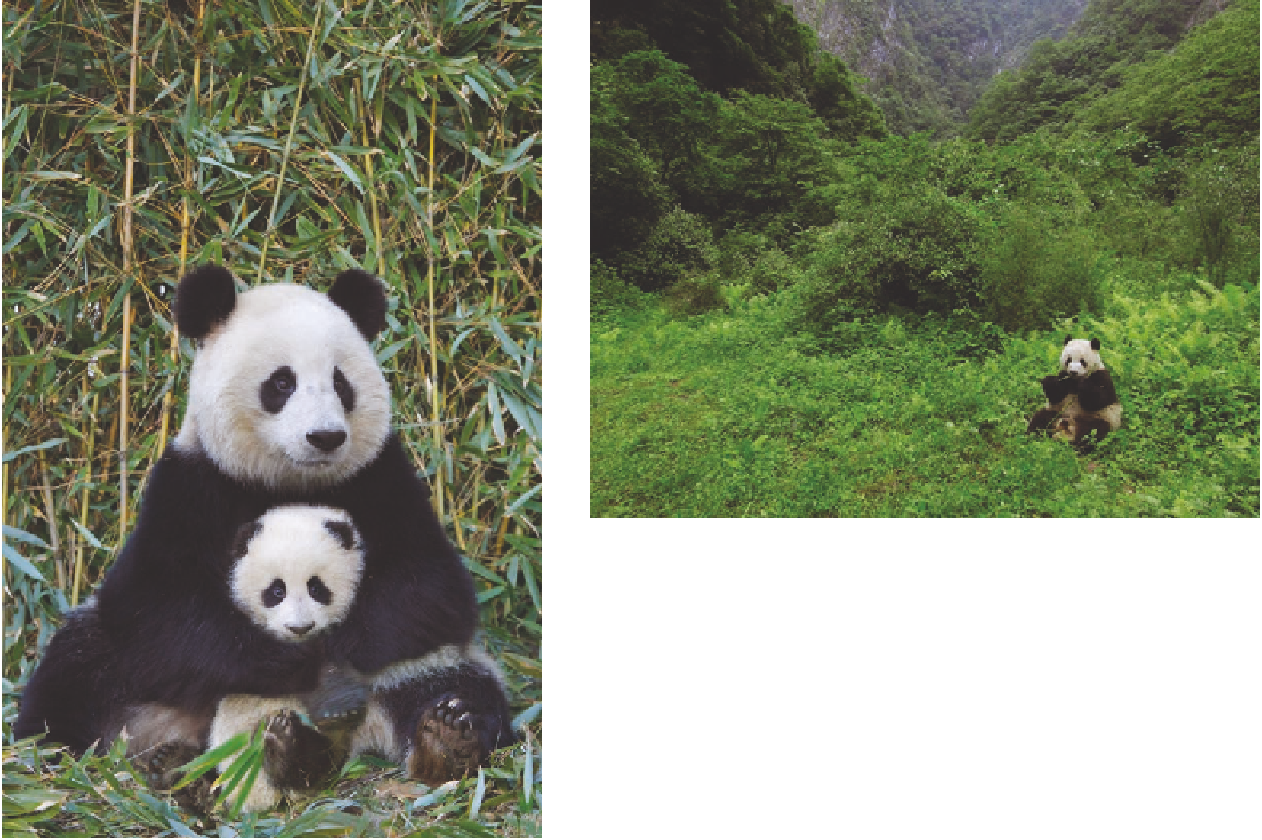Geoscience Reference
In-Depth Information
Case 4: Giant Panda
Conservation in China
servation efforts required to save them in the wild. In contrast
to the potentially bleak case studies investigated in Las Vegas,
California, and Australia, the panda case demonstrates how a
potentially disastrous environmental issue may be stabilized
and perhaps reversed in the future by using holistic geographi-
cal principles.
Giant pandas are solitary members of the bear family (
Ur-
sidae
). They live in old-growth forests that have a healthy bam-
boo understory and forest clearings (Figure 20.30b). Although
pandas are classified as carnivores and have been known to eat
honey, bulbs, fish, and eggs, their diet consists almost entirely
(>95%) of bamboo shoots. Given the low nutrient composition
of bamboo, and the pandas' inability to digest cellulose effi-
ciently, they derive little energy from their food and thus must
consume up to 13.5 kg (~30 lb) of shoots daily. To meet this
need, they spend 10 to 12 h a day feeding and conserve energy
by moving slowly. Pandas neither hibernate nor make perma-
nent dens like many other bears and use hollow trees and caves
for shelter.
In the fourth and final case study, we will investigate the ef-
fort to conserve giant panda habitat in China. Giant pandas
(
Ailuropoda melanoleuca
) are among the most popular ani-
mals on Earth because of their distinctive markings and docile
demeanor (Figure 20.30a). These animals are also an iconic
cultural symbol in China. Nevertheless, pandas are highly
threatened due to human land-use practices and thus are of-
ficially an endangered species. Only about 1600 of them live
in the wild. Given these very small numbers and the potential
for extinction, aggressive efforts are ongoing by the Chinese
government, international conservation agencies, and leading
scientists to protect remaining habitat so pandas can maintain
a sustainable population in the wild. Physical geography helps
us understand the panda's landscape, the impact that growing
human population has on the panda environment, and the con-
(b)
Figure 20.30 Giant pandas.
(a) Pandas are members of the
bear family and are known for their distinctive markings and doc-
ile demeanor. (b) Panda habitat consists of old-growth forests
with a prominent bamboo understory and forest clearings.
(a)

